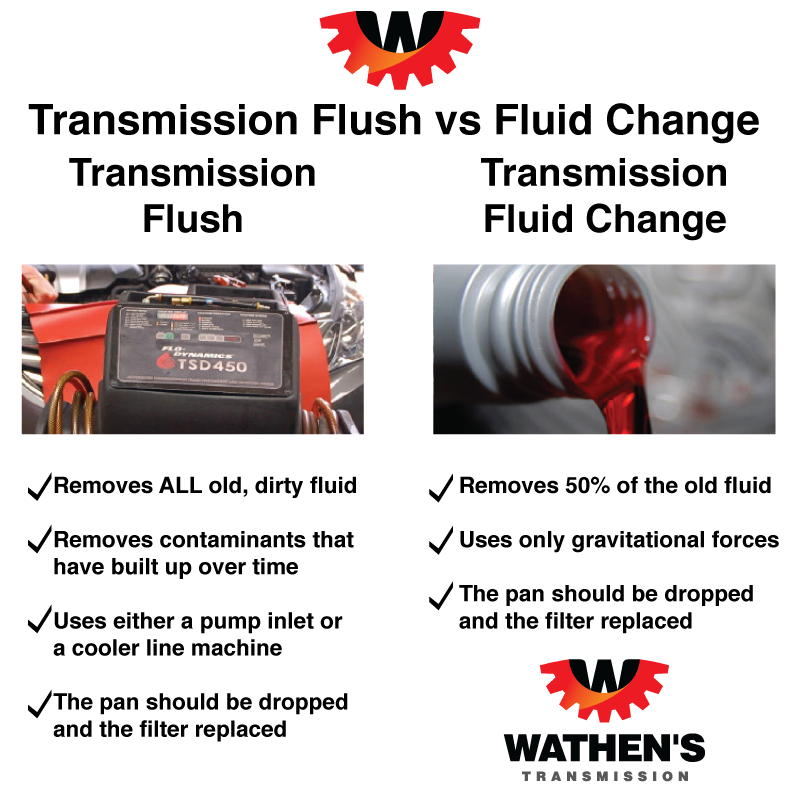How to Flush a Transmission
To flush a transmission, drain the old fluid and refill with new, following manufacturer recommendations. Flushing removes contaminants and improves performance.
Proper maintenance ensures a smooth-operating transmission, preventing costly repairs down the line. Regular fluid changes help extend the lifespan of your vehicle’s transmission, ensuring optimal functionality. By following these simple steps for transmission flushing, you can keep your vehicle running smoothly and efficiently for years to come.

Credit: blog.amsoil.com
Benefits Of Flushing A Transmission
Flushing a transmission, also known as a transmission flush, is a crucial maintenance practice that offers several remarkable benefits for your vehicle. It involves completely draining the old transmission fluid and replacing it with fresh fluid, ensuring optimal performance. Let’s take a closer look at the advantages of flushing a transmission.
Improved Performance
A transmission flush plays a vital role in enhancing the performance of your vehicle. Over time, the transmission fluid can become contaminated with dirt, debris, and contaminants, leading to reduced efficiency and sluggish shifting. By flushing the transmission, you effectively remove these harmful elements, allowing the transmission to operate smoothly and efficiently.
As a result, your vehicle will experience improved acceleration, better fuel efficiency, and smoother gear transitions. Whether you’re driving through city streets or maneuvering on the highway, a flushed transmission ensures your vehicle delivers optimal performance in every situation.
Extended Lifespan
Another significant benefit of flushing a transmission is an extended lifespan for your vehicle’s transmission system. With regular use, transmission fluid can break down, losing its lubricating properties over time. Without proper lubrication, the transmission can experience excessive friction, leading to wear and tear.
By flushing the transmission, you not only remove any degraded fluid but also replace it with fresh, clean fluid. This helps ensure that all vital components within the transmission stay properly lubricated, reducing the risk of friction-related damage. As a result, your transmission will be better equipped to withstand the rigors of daily driving, ultimately extending its lifespan.
Additionally, the removal of contaminants through a transmission flush prevents the buildup of harmful deposits that can clog the transmission’s delicate internal components. By eliminating these deposits, you minimize the chances of costly repairs or even complete transmission failure, allowing your vehicle to serve you well for years to come.

Credit: www.wathenstransmission.com
Signs Your Transmission Needs Flushing
In order to maintain the optimal performance of your vehicle, it is crucial to recognize the signs that indicate your transmission needs flushing. Neglecting this essential maintenance task can lead to costly repairs down the line.
Irregular Shifting
When your transmission starts to shift irregularly, it could be a sign that it needs flushing. Problems like delays in shifting gears or abrupt jerking motions are indicative of a transmission in need of attention.
Grinding Or Strange Noises
If you hear grinding or other unusual noises when shifting gears, it may be a sign that your transmission fluid is degraded. Flushing the transmission can help eliminate these noises and prevent further damage.
Steps To Flush A Transmission
To flush a transmission, start by checking your vehicle’s manual for the recommended fluid type. Then, locate the transmission fluid pan and remove it to drain the old fluid. Next, replace the filter before refilling the transmission with new fluid and testing for leaks.
This process can help extend the life of your vehicle’s transmission.
Gather Necessary Supplies
Before starting the process, ensure you have the following supplies:
- Transmission fluid
- Transmission flush kit
- Jack stands
- Ratchet set
- Drain pan
Perform The Flush
Follow these steps to properly flush your transmission:
- Locate and remove the drain plug to drain the old fluid into the pan.
- Reinstall the drain plug and fill the transmission with the new fluid.
- Connect the flush machine to the transmission system.
- Turn on the engine and let the machine run to flush out the old fluid.
- Monitor the fluid level and refill as needed.
- Disconnect the flush machine and reassemble any components removed.

Credit: m.youtube.com
Importance Of Regular Transmission Flushing
Regular transmission flushing is crucial for maintaining the performance and longevity of your vehicle. By flushing the transmission, you remove old fluid, debris, and contaminants, preventing potential damage and enhancing overall efficiency. Make sure to follow the proper steps to flush your transmission and keep it running smoothly.
Regular transmission flushing is a crucial maintenance task that can significantly extend the lifespan of your vehicle’s transmission system. By flushing the transmission, you remove old, degraded fluid and replace it with clean fluid, ensuring optimal performance and preventing potential damage. Let’s explore the importance of regular transmission flushing in more detail.
Prevention Of Damage
One of the primary benefits of regular transmission flushing is its ability to prevent damage to your vehicle’s transmission system. Over time, transmission fluid can accumulate debris, dirt, and other contaminants, which can clog the system. This buildup of contaminants can lead to inefficient transmission operation, increased friction, and potentially costly damage to internal components.
By regularly flushing the transmission, you rid the system of these harmful contaminants, ensuring smooth fluid flow and preventing the accumulation of debris. This proactive maintenance approach helps to safeguard your transmission from potential damage and can save you from expensive repairs down the line.
Maintaining Smooth Operation
A well-functioning transmission is essential for a smooth and enjoyable driving experience. Regular transmission flushing plays a crucial role in maintaining the smooth operation of your vehicle. Over time, transmission fluid can break down, losing its lubricating properties and becoming less effective in assisting gear shifts.
When the transmission lacks proper lubrication, it can cause grinding and jerky gear changes, resulting in a less comfortable and efficient driving experience. By flushing the transmission regularly, you ensure that fresh, clean fluid is circulating throughout the system, providing optimal lubrication for smooth gear changes and reducing the chances of encountering transmission-related issues.
Furthermore, consistent fluid flow resulting from regular flushing helps to regulate the temperature of the transmission, preventing excessive heat build-up. Transmission overheating can lead to fluid degradation and can cause various transmission problems. By maintaining the right fluid level and quality through regular flushing, you help to keep the transmission operating at the appropriate temperature and, in turn, ensure its smooth operation.
Regular transmission flushing is a simple yet highly effective maintenance practice that can pay off in the long run. By preventing damage and maintaining smooth operation, you can maximize the lifespan of your vehicle’s transmission system and enjoy a more reliable and comfortable driving experience.
Professional Vs. Diy Transmission Flushing
When it comes to flushing a transmission, you have two main options – professional service or a do-it-yourself approach. Each method has its own set of advantages, and the right choice for you may depend on factors such as cost considerations and skill level required.
Cost Considerations
Professional transmission flushing can cost anywhere from $100 to $300, depending on the vehicle make and model. This includes the cost of equipment, labor, and the flushing fluid. On the other hand, a DIY transmission flush will only set you back around $50 to $100, as you’ll mainly be paying for the flushing fluid and a few basic tools.
Skill Level Required
In terms of skill level, professional transmission flushing requires no hands-on involvement from the vehicle owner. The process is carried out by experienced technicians who have the necessary expertise and equipment. On the other hand, a DIY transmission flush necessitates a basic understanding of the vehicle’s components and a willingness to get your hands dirty. While it’s a straightforward process, it does require careful attention to detail and following the manufacturer’s guidelines.
Frequently Asked Questions For How To Flush A Transmission
Can I Flush My Transmission Myself?
Yes, you can flush your transmission yourself if you have the necessary tools and expertise. It’s essential to follow proper procedures to prevent damage.
Is It Better To Flush Or Change Transmission Fluid?
It is better to change transmission fluid than flush it; flushing can dislodge debris and harm the transmission system.
How Many Hours Does It Take To Flush A Transmission?
It typically takes about 1-2 hours to flush a transmission.
How Much Does It Cost To Get Your Transmission Flushed?
The cost of getting your transmission flushed typically ranges from $150 to $300. It depends on the make and model of your vehicle. Factors like location and labor charges can also affect the overall cost. Regular maintenance of your transmission can prevent expensive repairs in the future.
How Often Should Transmission Fluid Be Flushed?
Transmission fluid should be flushed every 30,000 to 60,000 miles, as recommended by most manufacturers. Regular flushing helps maintain the transmission’s health and performance.
What Are The Signs That A Transmission Needs Flushing?
Look out for signs such as rough shifting, slipping gears, unusual noises, and burnt smell. These indicate the need for a transmission flush to remove contaminants and ensure smooth operation.
Is Transmission Flushing Necessary For Automatic Vehicles?
Yes, automatic vehicles also benefit from regular transmission flushing. It helps remove old fluid and contaminants, allowing the transmission to operate at its best and extending its lifespan.
Conclusion
Flushing a transmission is a crucial step to maintaining a healthy and smooth-running vehicle. By following the step-by-step guide outlined in this post, you can ensure that your transmission remains free of debris and contaminants, prolonging its lifespan and avoiding costly repairs.
Regular transmission flushes are an essential aspect of vehicle maintenance and can greatly contribute to the overall performance and longevity of your car. Don’t neglect this important task and keep your transmission running smoothly for years to come.

